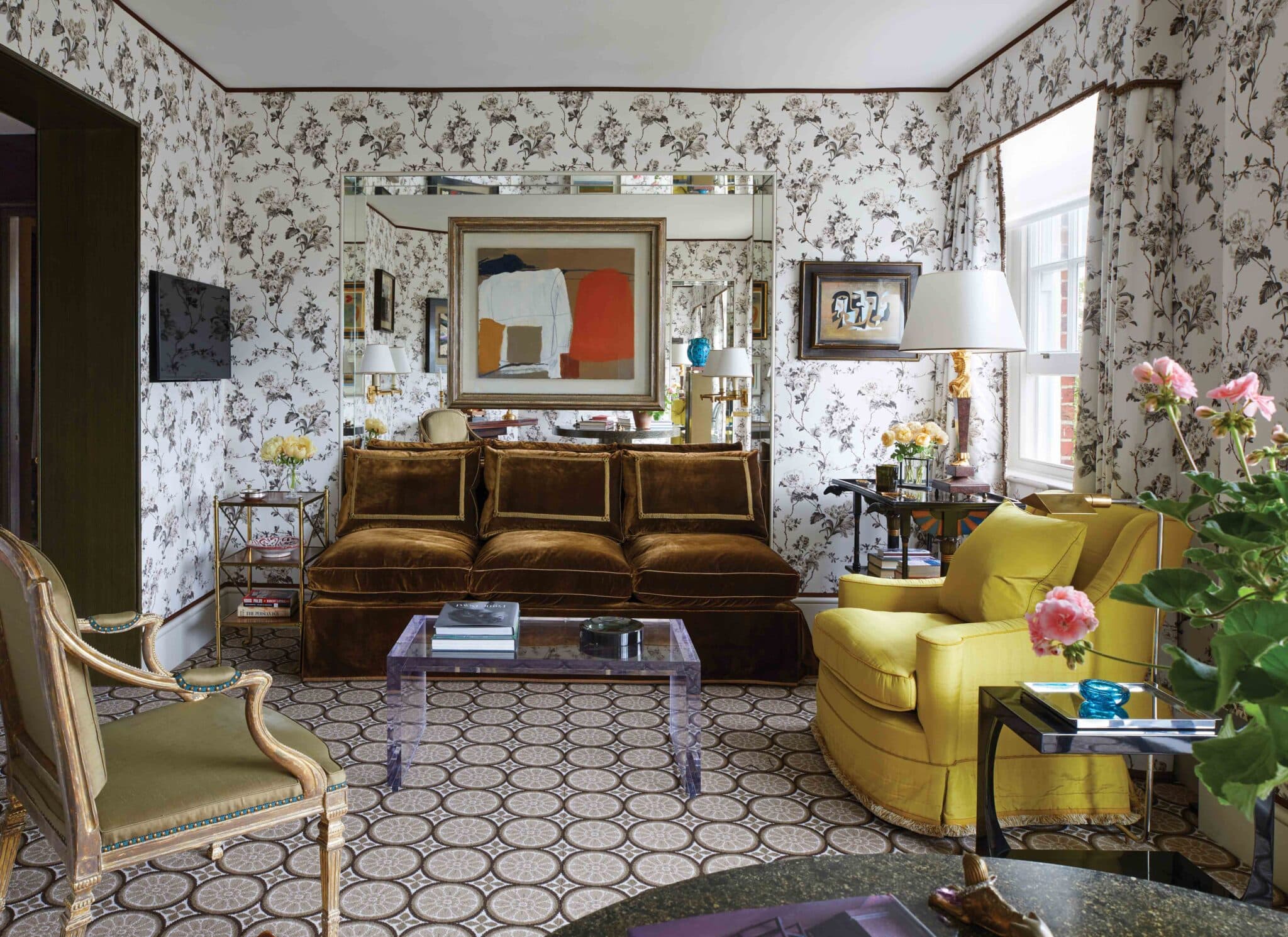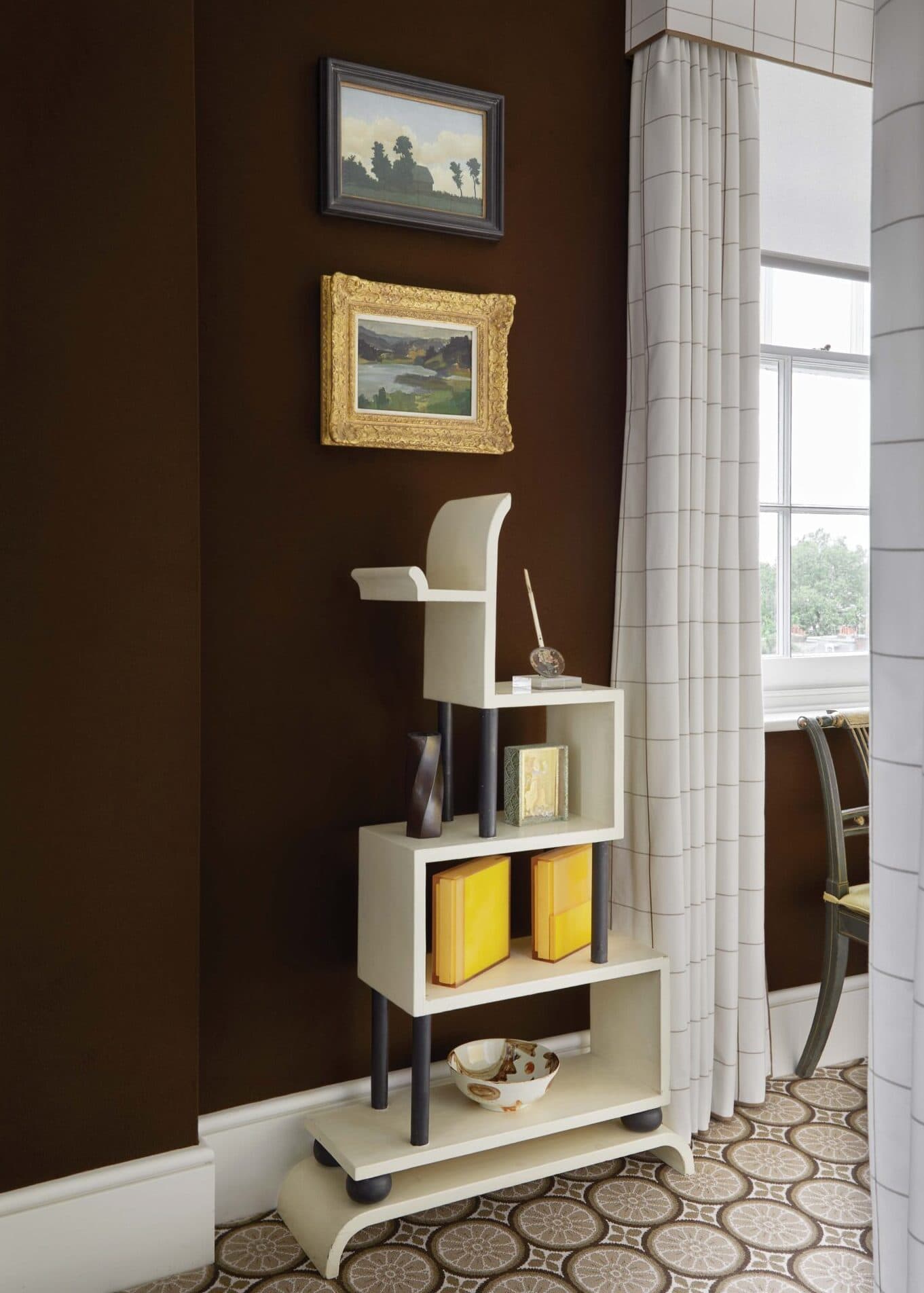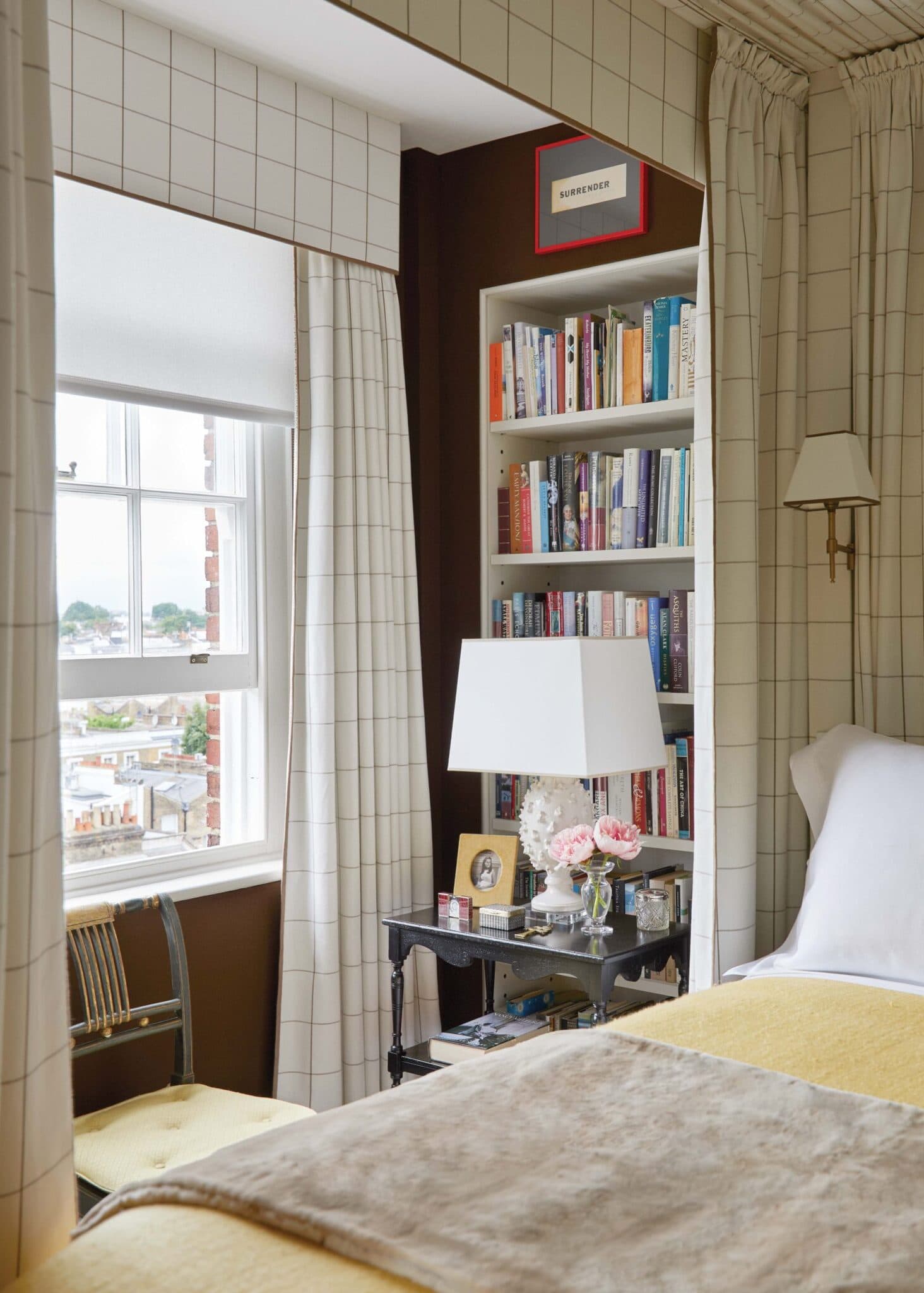Wherever he goes, for leisure or for work, the erudite London-based interior designer Veere Grenney totes along an eternal triad of muses. How could it be otherwise? After all, they form the holy trinity of classically inflected 20th-century aesthetes: David Hicks, the 1970s master of color-saturated geometrics; Colefax & Fowler’s Nancy Lancaster, a Virginia heiress who became grand dame of English decorating; Billy Baldwin, the crisp patrician American who gave Diana Vreeland her all red “Garden in Hell.”
-
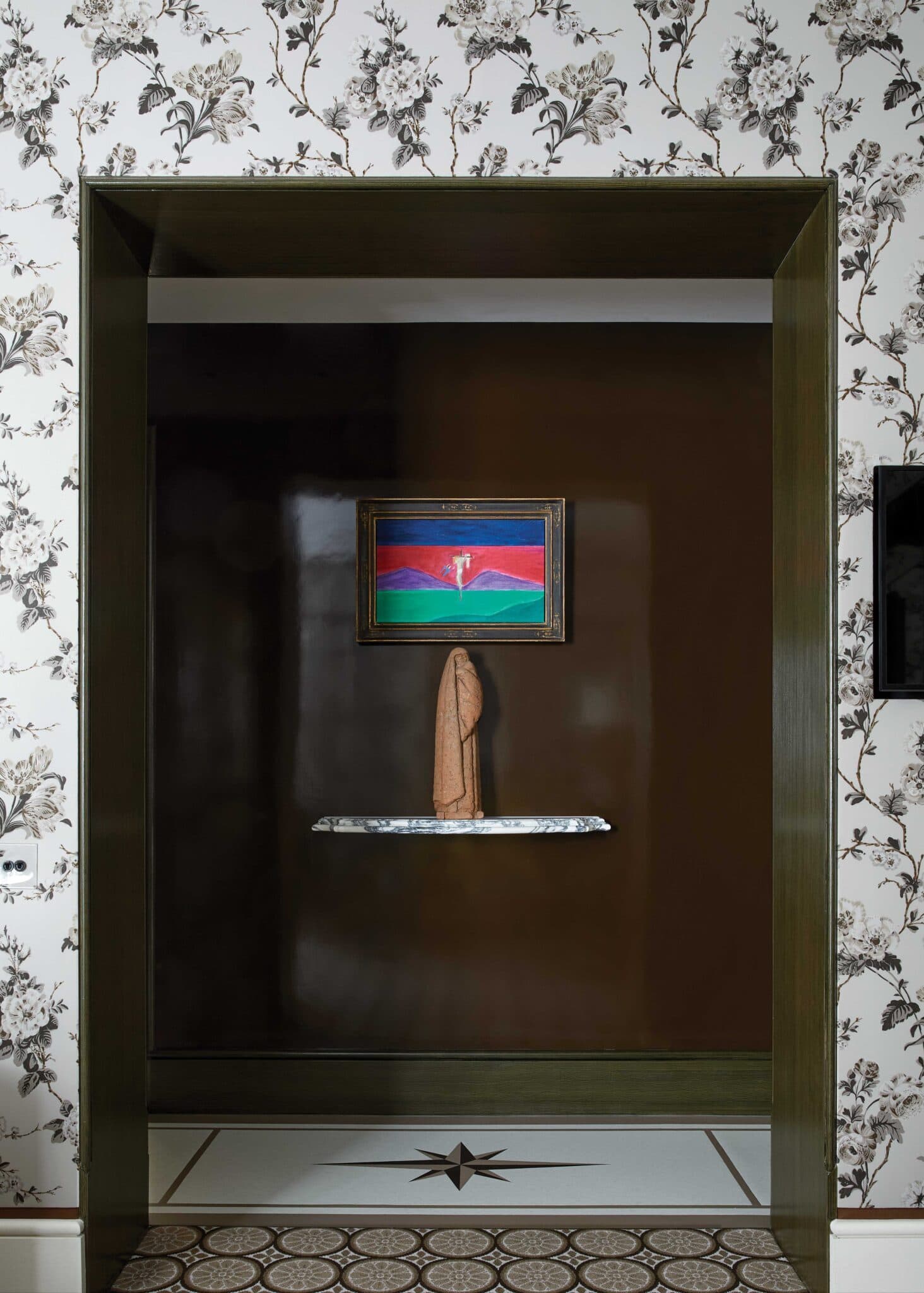
The entrance hall is lacquered chocolate brown in a nod to a New York residence designed by Billy Baldwin in 1960; the faux-marble floor is actually linoleum.
Francesco Lagnese -
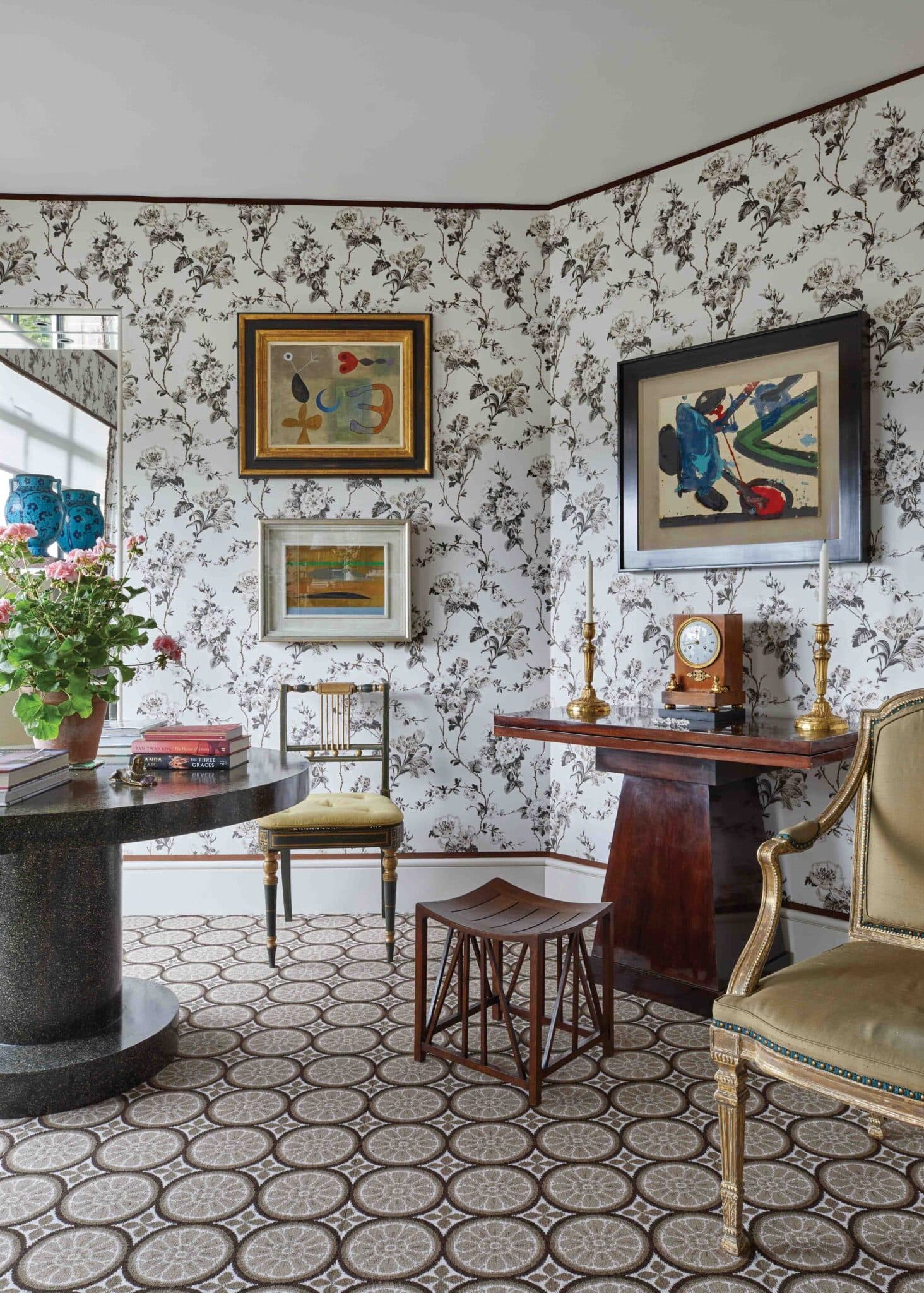
An Egyptian-inspired early-19th-century card table holds a space-saving secret: The top folds open and swivels out to double in size. The Thebes stool, from Liberty & Co., dates to 1890.
Francesco Lagnese
Grenney, of course, is an icon in his own right. Since the start of his storied career—he emigrated from Auckland at age 21 in the early 1970s and worked in a restaurant to fund his Portobello Road Market antiques stall before coming under the tutelage of Hicks and the daring modernist Mary Fox Linton—his work has embodied what each of those masters innately knew: that tradition reaches new heights when tempered by a bit of divine madness. “That’s why they endure,” he says.
Recently, more than a quarter century since opening his eponymous firm, Grenney found himself spending more and more time at his cliffside villa in Tangier, with its tiered gardens and views across the Strait of Gibraltar. So he decided to downsize his London residence, selling the double-fronted Georgian townhouse he re-did top to bottom a decade ago in favor of a petite pied-à-terre.
-

The pint-size kitchen (“Small but enough for a snack!”) is a sunny delight, with cabinets painted in Gamboge by Paint and Paper Library. The door knob is by Charles Edwards; the stool is Hay.
Francesco Lagnese -
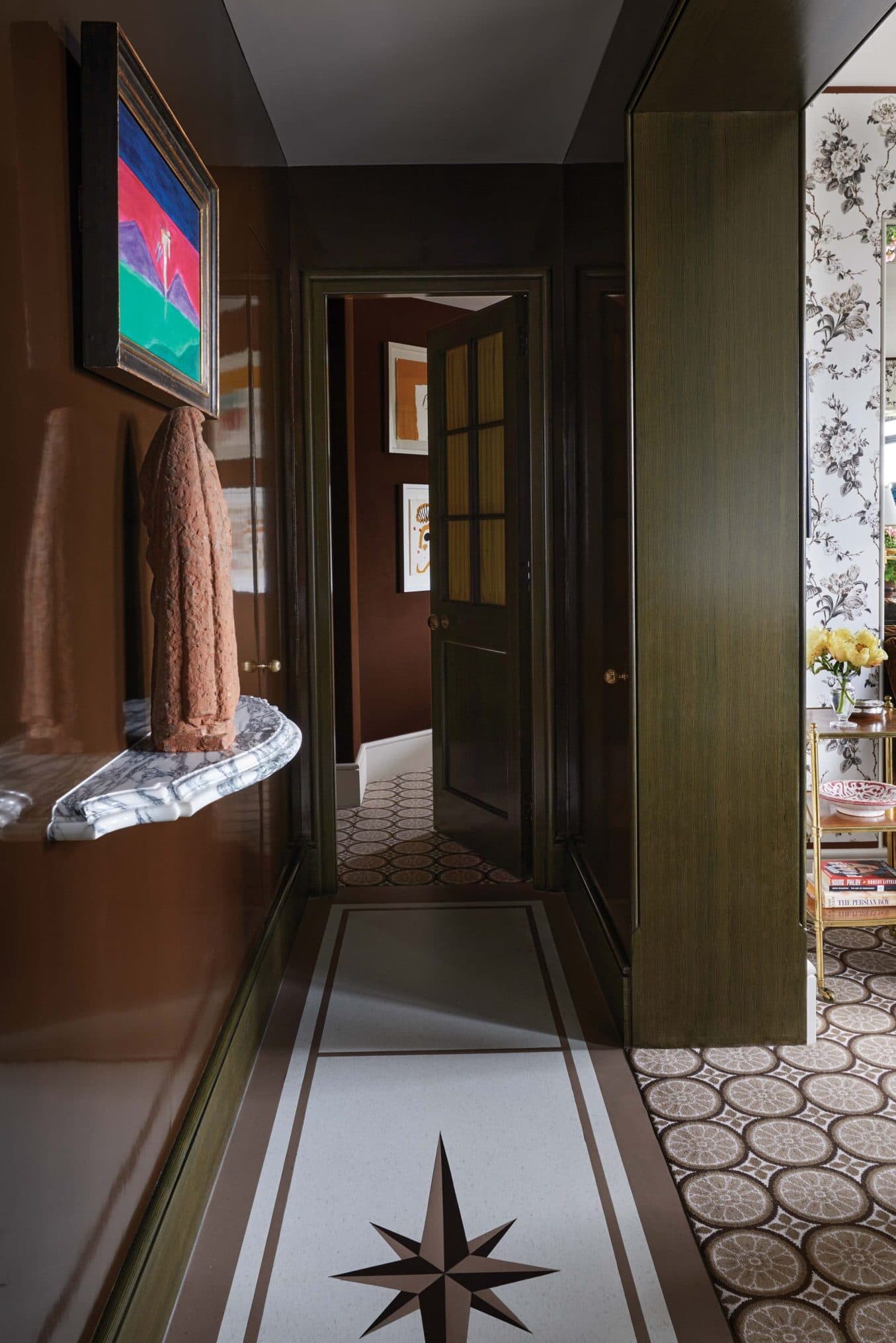
A cantilevered marble shelf displays a late-19th-century terra-cotta of a shrouded woman; above is a painting by Craigie Aitchison.
Francesco Lagnese
His new flat, where he spends three or four nights a week, is an eccentrically shaped jewel box, 650 square feet at the top of a six-story 1936 block in Chelsea that was built by the London Electricity Board— the city’s first structure to have under-floor heating. His office, with a dozen employees, is within walking distance. Because for 40 years he has spent most weekends at The Temple, a 1735 canal-front Palladian villa in Suffolk that once belonged to Hicks himself, he “didn’t need there to be too much to worry about” in town, he says.
But this being Grenney, every inch of the small residence, which took him nine months or so to finish, is cleverly conceived and meticulously polished. Because the natural light is so vivid—truly a luxury in London—he was able to embrace the deep shades that rarely get their due in a small space. While his portfolio includes plenty of grandly scaled projects, Grenney has never believed that good design necessitates the drama of huge expanses; it is proportion that prevails, no matter the footprint. “I wanted it to seem like a fantasy flat in the Carlyle hotel,” he explains of his current home.
Naturally, there are nods to his three muses everywhere, from the colors and patterns to the silhouettes and shapes. The living room, with distant views of the Thames, is wrapped in a charcoal-and-white chintz he designed for Schumacher; in a Hicksian touch, the prim floral walls are juxtaposed with a graphic custom carpet. A deep brown velvet sofa beckons beside a voluptuously curved mustard smoker’s chair; above, on a mirrored panel, hangs an impassioned late Roger Hilton abstract from 1971. In a corner, on a pedestal, sits one of his most prized possessions, a 19th-century turquoise Persian vase acquired from Cecil Beaton’s 1980 estate sale; its reflection in the mirror behind it lights up the entire room. “It’s been in my interiors constantly,” Grenney says.
The small but vibrant buttercup-lacquered kitchen is a bow to Lancaster, who enshrined the shade in the famed 1950s living room she created at 22 Avery Road in Mayfair. The bedroom, down a short entrance hall with deep brown walls and a faux-inlaid-marble floor, has odd angles that showcase a four-poster bed draped in a graphic check, and a reading area complete with a Billy Baldwin–inspired slipper chair. Nearby, an Art Deco étagère in vellum and ebonized wood is bedecked with works by the German neo-minimalist artist Werner Haypeter, in resin and acrylic.
Even now, months after settling in, the place provides Grenney with a gentle thrill each time he puts his key in the lock. After the midweek workday spent coordinating upcoming projects in Jerusalem, Abu Dhabi, and Singapore, as well as his usual slate of homes in London and New York, he makes his way through the busy streets to this intimate retreat, where he prepares a cup of tea and breathes in the calm. “I’m living my normal life in miniature,” he says. “And that’s a really lovely life indeed.”
THIS ARTICLE ORIGINALLY APPEARED IN VOLUME 11 OF FREDERIC MAGAZINE. CLICK HERE TO SUBSCRIBE!
















